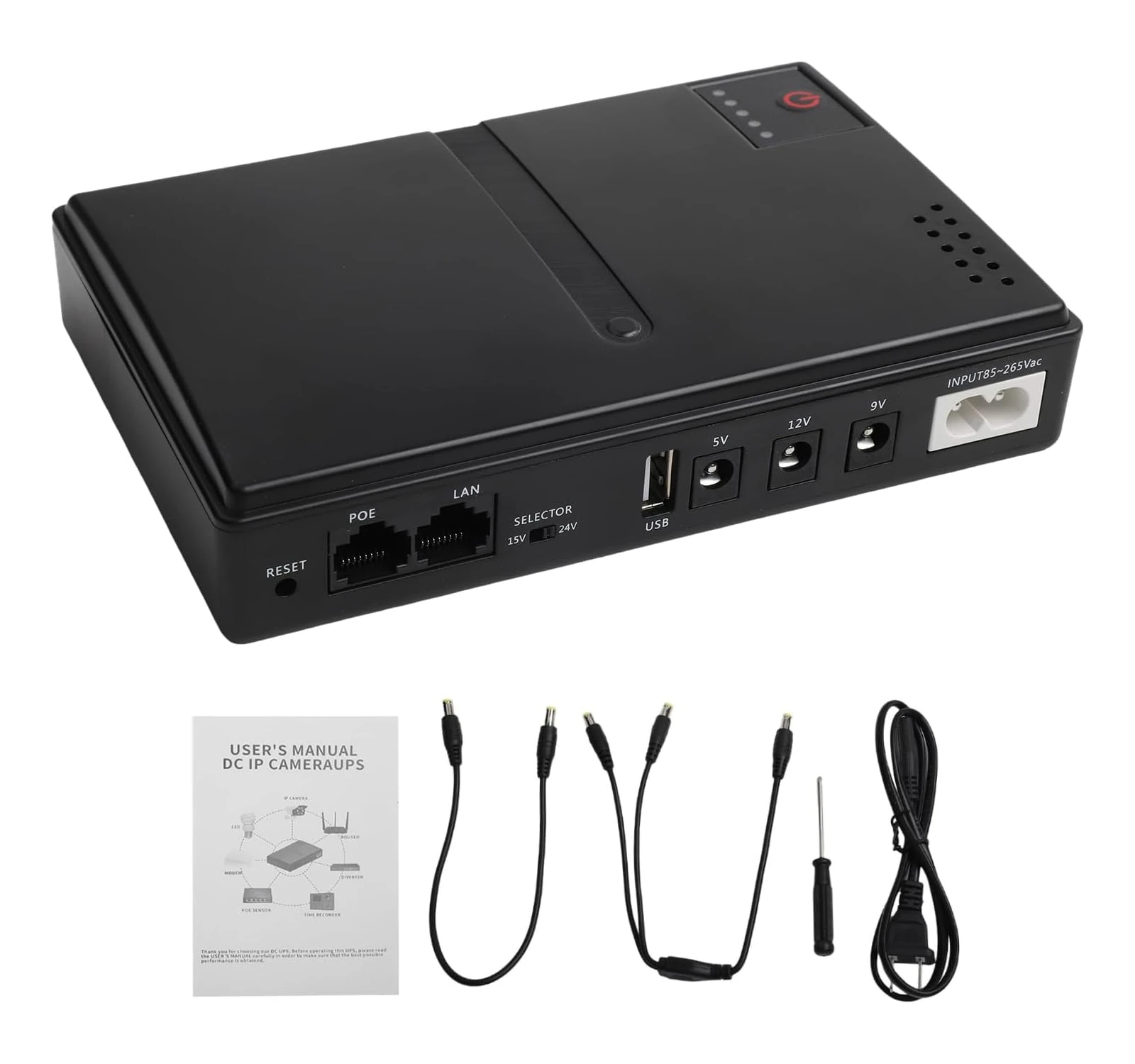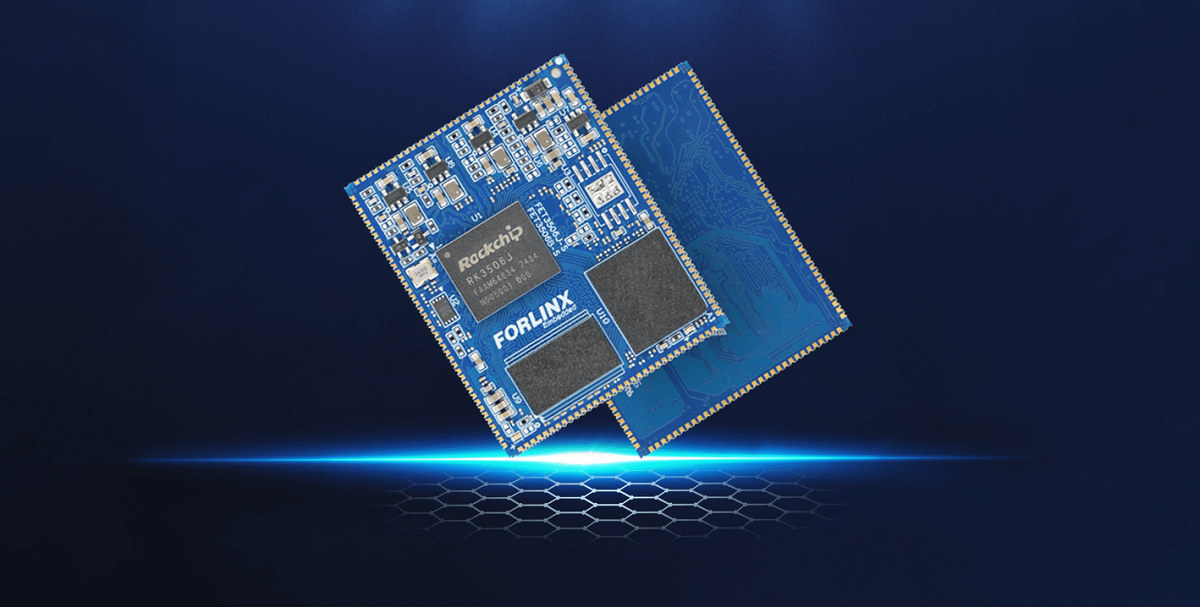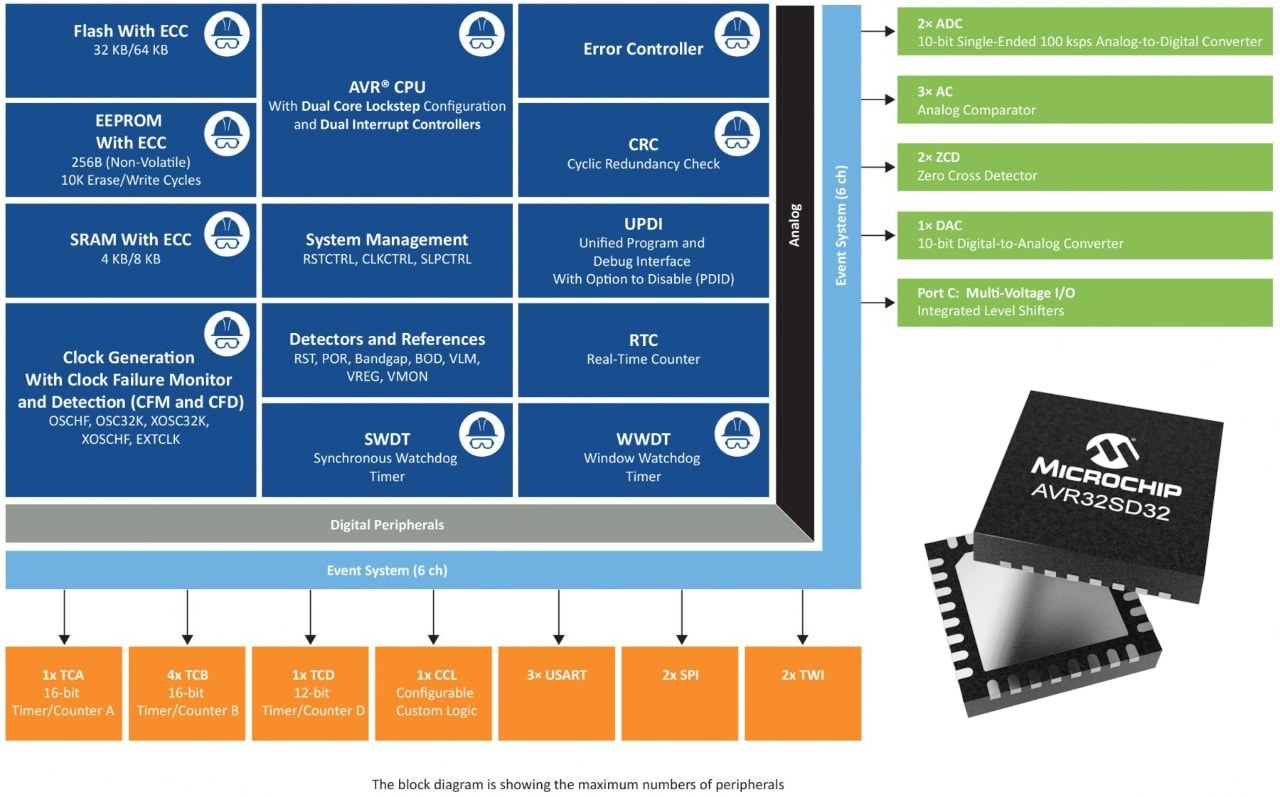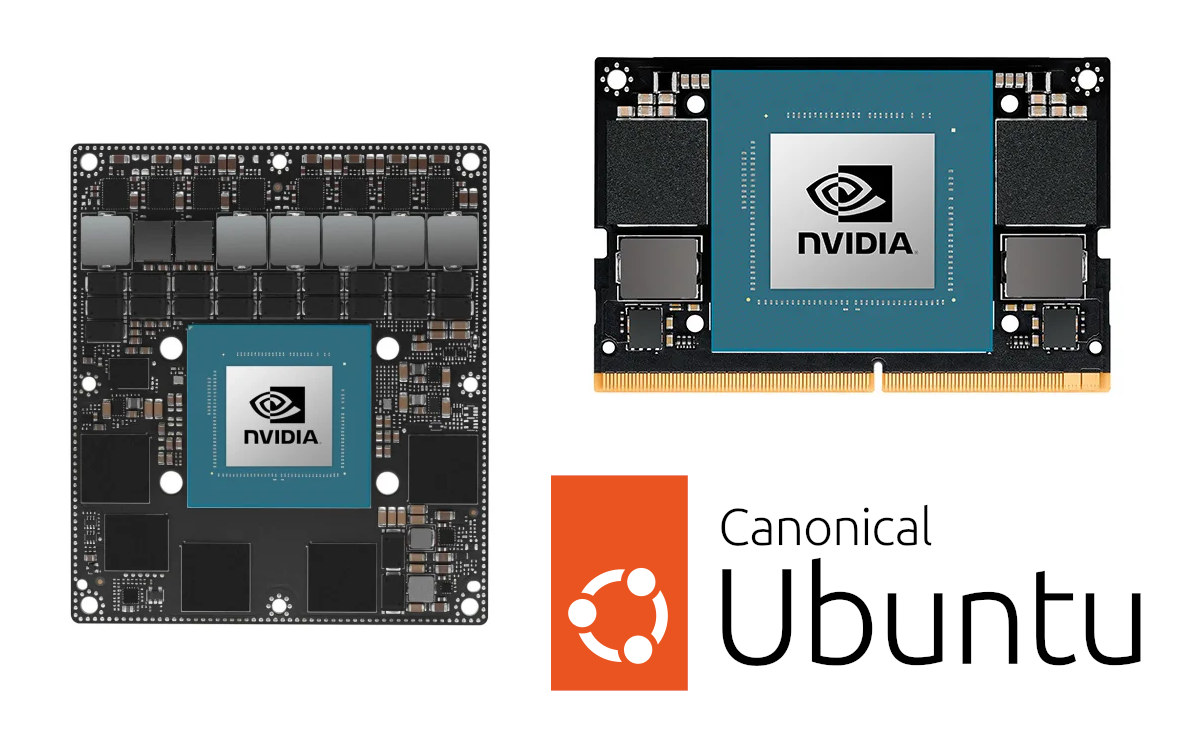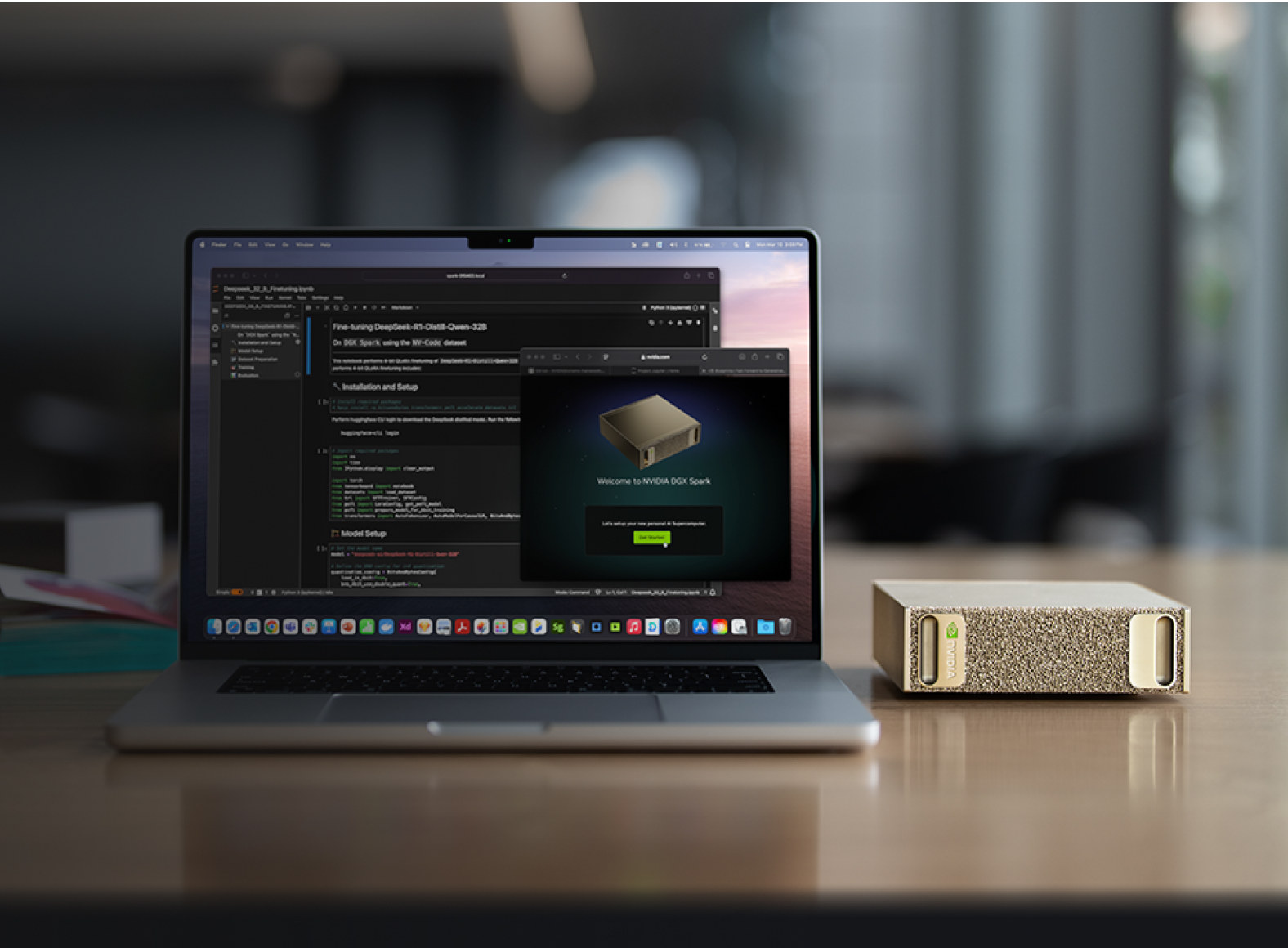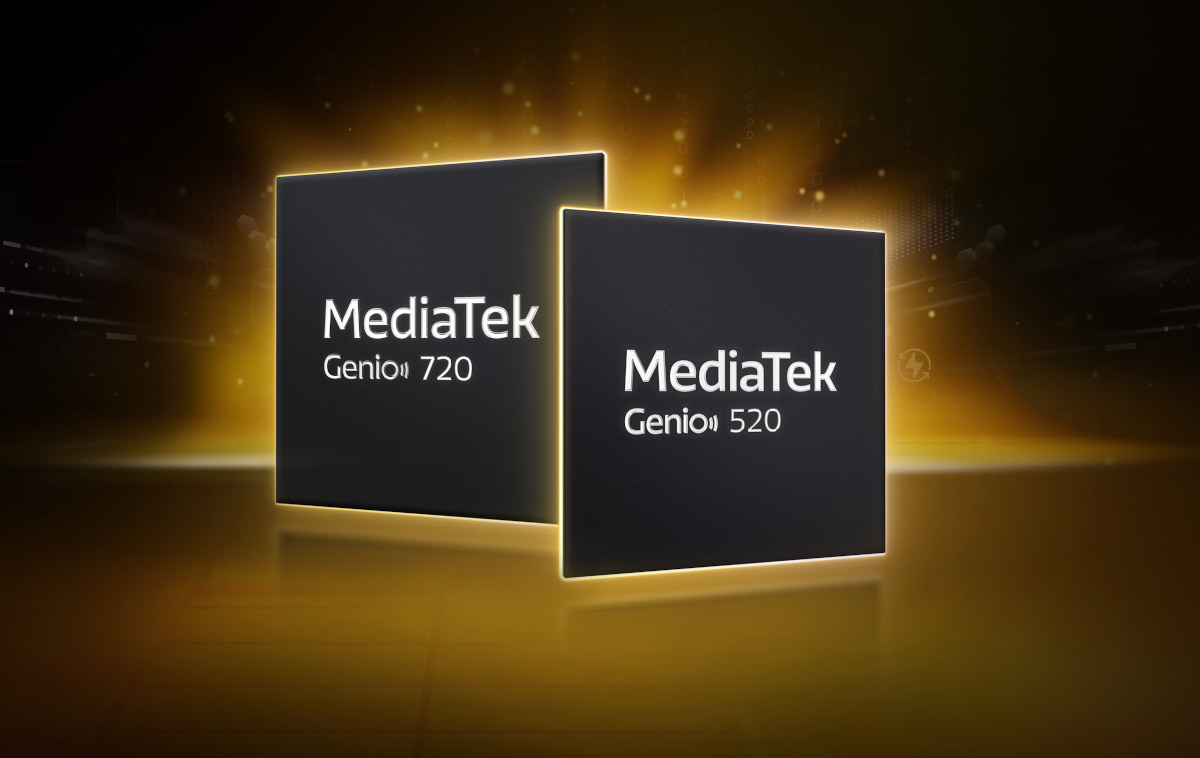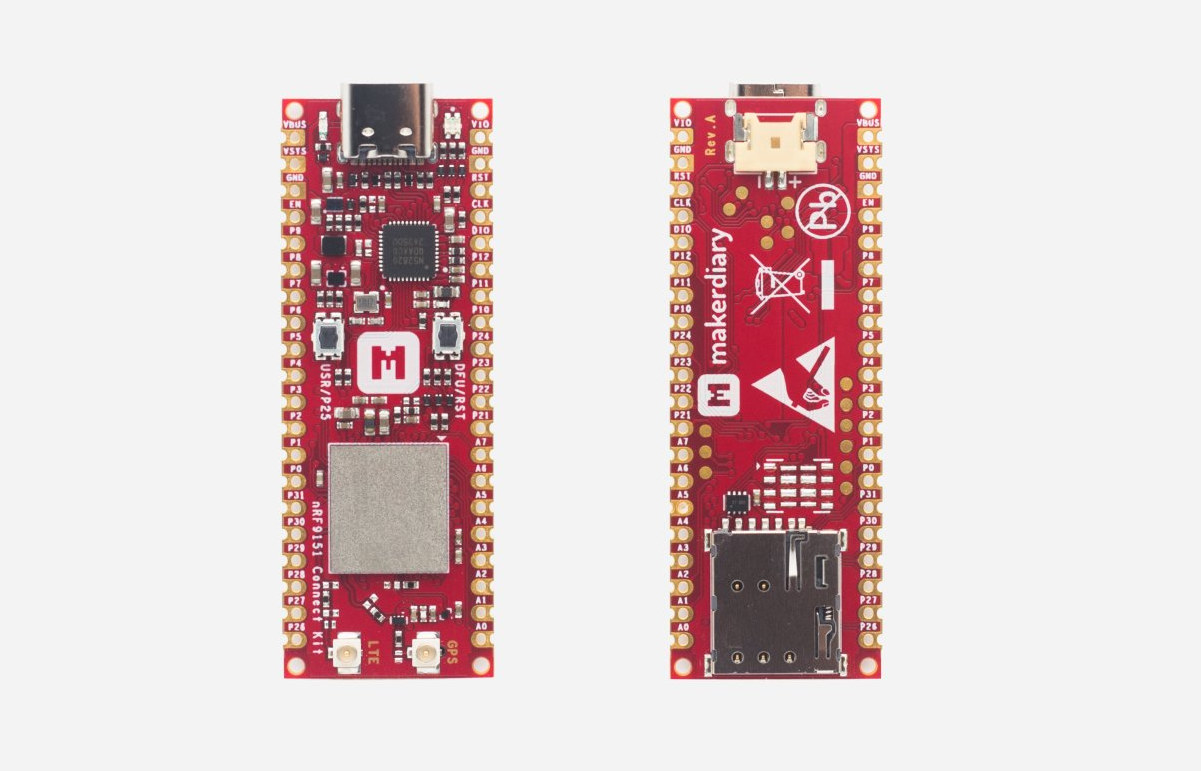Most uninterruptible power supplies (UPS) require AC voltage and use specific batteries that must be changed every few years. But those may be oversized and not the most efficient if you just want to keep single board computers (SBCs), low-power mini PCs, routers, or security cameras up and running during power failures. Luckily, some mini UPS solutions use standard rechargeable 18650 batteries, output 5V, 9V, or 12V DC, or even PoE (15V/24V) which may be more suitable for those use cases. Many mini UPS solutions come from WGP (Wonderful Green Power), so let’s have a look at the WPG103A model. WPG103A mini UPS specifications: Batteries – 4x 18650 batteries for a combined 10,400 mAh capacity Protection – Overcharge, over-discharge, overcurrent, and short circuit protection Misc – Power button, status LEDs Power Input – 12V/2A via DC jack Power Output 5V via USB Type-A port (likely limited to 1.5A or 2A […]
Forlinx FET3506J-S low power system-on-module features Rockchip RK3506J industrial-grade tri-core Cortex-A7 SoC
Forlinx FET3506J-S system-on-module (SoM) is based on a Rockchip RK3506J SoC, the industrial version of the RK3506 tri-core Cortex-A7 SoC, designed for smart industrial applications, and operating at a low power consumption of about 0.7 Watts. The Rockchip RK3506 SoC was first unveiled in 2023 through a product roadmap. However, we only spotted it in a product at the very end of 2024 with the Luckfox Lyra and Luckfox Lyra Plus featuring a MIPI CSI display connector and optional Ethernet. The Forlinkx FET3506J-S CPU module is the first platform with the industrial version (RK3506J), and the company also provides the OK3506 carrier board/development board for evaluation. Forlinx FET3506J-S system-on-module Specifications: SoC – Rockchip RK3506J CPU 3x Arm Cortex-A7 core up to 1.5 GHz or 1.6 GHz (depending on where one looks in the documentation) Arm Cortex-M0 real-time core GPU – 2D GPU only No VPU, no NPU System Memory – […]
Microchip AVR SD 8-bit dual-core microcontrollers offer functional safety for less than one dollar
Microchip AVR SD family of low-cost 8-bit microcontrollers (MCUs) feature built-in functional safety (FuSa) mechanisms designed to meet Automotive Safety Integrity Level C (ASIL C) and Safety Integrity Level 2 (SIL 2) requirements, both of which mandate redundant safety checks. Hardware safety features include a dual-core lockstep CPU, two ADCs for redundancy, an Error Correction Code (ECC) on all memories, a dedicated error controller module, error injection mechanisms, and voltage and clock monitors. The company further explains the AVR SD MCU meets Fault Detection Time Interval (FDTI) targets as low as 1 millisecond, and its functional safety management system has been certified by TÜV Rheinland. Microchip AVR SD specifications: MCU core – AVR CPU in Dual-Core Lockstep (DCLS) clocked at up to 20 MHz Memory – 4 KB or 8KB SRAM with ECC Storage 32 KB or 64KB in-system-programmable Flash memory with ECC 256B EEPROM with ECC 512B of user […]
Canonical now officially supports Ubuntu on NVIDIA Jetson system-on-modules
The NVIDIA JetPack SDK has been based on Ubuntu ever since it was created (although the Jetpack 6 SDK changed that somewhat), so I was surprised to read that Canonical now officially supports Ubuntu on NVIDIA Jetson, since I assumed there may have already been a partnership in place. The announcement explains that Canonical has announced the General Availability (GA) of Ubuntu for the NVIDIA Jetson Orin for edge AI and robotics “bringing enterprise-grade stability and support” to the popular system-on-modules. Canonical further explains the collaboration enables better performance with optimized Ubuntu images for the NVIDIA Jetson platform, enterprise-level security with updates and long-term support, a unified environment from edge to cloud, and improved stability and reliability with Canonical’s QA team performing over 500 OS compatibility-focused hardware tests. If we visit the NVIDIA Jetson page of the Ubuntu website, we’ll find Ubuntu Server 22.04 images for the Jetson AGX Orin, […]
NVIDIA DGX Spark – A desktop AI supercomputer powered by NVIDIA GB10 20-core Armv9 SoC with 1,000 TOPS of AI performance
NVIDIA DGX Spark may look like a mini PC, but under the hood, it’s a powerful AI supercomputer based on the NVIDIA GB10 20-core Armv9 SoC with Blackwell architecture delivering up to 1,000 TOPS (FP4) of AI performance, and high memory bandwidth (273 GB/s) with 128 GB 256-bit LPDDR5x. The GB10 SoC is equipped with ten Cortex-X925 cores, ten Cortex-X725 cores, a Blackwell GPU, 5th Gen Tensor cores, and 4th Gen RT cores. The system also features a 1 TB or 4TB SSD, an HDMI 2.1a video output port, 10GbE and WiFi 7 networking, and four USB4 ports. NVIDIA DGX Spark specifications: SoC – NVIDIA GB10 CPU – 20-core Armv9 processor with 10x Cortex-X925 cores and 10x Cortex-A725 cores Architecture – NVIDIA Grace Blackwell GPU – Blackwell Architecture CUDA Cores – Blackwell Generation 5th Gen Tensor cores 4th Gen RT (Ray Tracing) cores Tensor Performance – 1000 AI TOPS (FP4) […]
The Pebble Smartwatch is back with the Core 2 Duo and Core Time 2 models running PebbleOS open-source firmware
The Pebble Smartwatch was first introduced in 2012 with a black and white e-Paper display, a week of battery life, and an amazingly successful Kickstarter company that raised over 10 million dollars. It was followed by the Pebble Time with a color display in 2015, and the Pebble 2 & Time 2 watches followed in 2016. But then it all went south from there, and Pebble’s assets were purchased by Fitbit in December 2016, all projects were canceled that year, and cloud services were discontinued in June 2018. Since then, the community has taken over working on the Rebble project to keep existing watches running, and Google acquired Fitbit in 2021. However, the project is slowly coming back to life. First, Google released the source code for the Pebble smartwatches and Pebble’s founder, Eric Migicovsky, and a team of engineers worked on reviving the project which now culminates with the […]
MediaTek Genio 720 and 520 AIoT SoCs target generative AI applications with 10 TOPS AI accelerator
The announcement of the MediaTek Genio 720 and Genio 520 octa-core Cortex-A78/A55 AIoT SoCs is one of the news I missed at Embedded World 2025. The new models appear to be updates to the Genio 700 and Genio 500 with a beefier NPU, and the Taiwanese company says the new Genio series supports generative AI models, human-machine interface (HMI), multimedia, and connectivity features for smart home, retail, industrial, and commercial IoT devices. Both are equipped with a 10 TOPS NPU/AI accelerator for transformer and convolutional neural network (CNN) models and support up to 16GB of LPDDR5 memory to handle “edge-optimized” (i.e. quantized) large language models (LLMs) such as Llama, Gemini, Phi, and DeepSeek, and other generative AI tasks. MediaTek Genio 720 and Genio 520 specifications: Octa-core CPU Genio 520 2x Arm Cortex-A78 up to 2.2 GHz (Commercial) or 2.0 GHz (Industrial) 6x Arm Cortex-A55 up to 2.0 GHz (Commercial) or […]
Makerdiary nRF9151 Connect Kit board offers LTE-M, NB-IoT, DECT NR+, and GPS connectivity, on-board battery charger
Makerdiary nRF9151 Connect Kit is a Nordic Semi nRF9151-based board with LTE-M, NB-IoT, GNSS, and DECT NR+ connectivity, an on-board battery charger, and a built-in nRF52820 “interface” MCU for debugging and programming. The board features a USB-C port for power and programming, two 20-pin headers for expansion with through and castellated holes, a nano SIM card slot and a footprint for an eSIM, user and reset buttons, and a few user LEDs. Makerdiary nRF9151 Connect Kit specifications: SiP – Nordic Semi nRF9151 CPU – Arm Cortex-M33 @ 64 MHz Memory – 256 KB SRAM Storage – 1 MB flash Wireless – LTE-M and NB-IoT modem with GNSS 700-2200 MHz LTE bands: B1-B5, B8, B12, B13, B17-B20, B25, B26, B28, B65, B66, B85 Power Class 5 20 dBm Power Class 3 23 dBm 1.9GHz NR+ band support Certified for global operation Security – Arm TrustZone + Arm CryptoCell Interface MCU – […]


